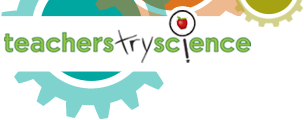Most living organisms produce waste products that are safely recycled by the ecosphere. Humans are the only species that produce unnatural waste (and we produce it in huge quantities)! Basically, this means that humans create LOTS of trash. Paper is the largest category of trash; as paper and other trash like plastics break down and begin to rot, there can be many negative effects to the environment; a dangerous gas — methane — can be released into the air, chemicals that are in or on the garbage might leak out into the ground during rainstorms, and germs, flies, vultures and other nuisances are often attracted to the continual build up of waste.
Wealthy countries, in general, produce more trash and garbage than other countries because the people in those countries can "afford" to consume more products. Oftentimes, developed countries try to export their trash to poorer countries in exchange for money to store their trash. Those poorer countries often take the waste because they need the money, even though they actually have no safe way to dispose of the waste.
Per capita, the United States is one of the worst producers of trash in the world. Americans use a lot of disposable products and products with abundant — and wasteful — packaging. For example, 1.6 billion writing pens go into the trash and 7 million automobiles are junked in the U.S. each year!
Excessive product packaging materials add to the solid-waste (trash) problem. Packaging engineers use smaller amounts of materials, and find more creative and efficient ways to safely package consumer products. Engineers determine what materials (paper, paperboard, plastics, glass, metal and wood) to use and if protective packaging is needed. If possible, they also use environmentally-friendly and recyclable materials, such as plastics, rather than non-recyclable materials. Please see the Recycle Now web site for more information. You can also view this video, What is Engineering, for more information about what engineers do.

Consumers — us! — need to help engineers by knowing how to sort the items in our garbage that are recyclable and reusable. Once we have sorted out the recyclable items, we need to make sure they get to the proper recycling facility, either by being picked up by a recycling service or by being dropped off at a recycling center. We also can help engineers by producing less waste and re-using items, such as wrapping paper and plastic eating utensils. By helping engineers as they try to develop technologies for dealing with waste, we are also helping our communities from having to find places to store extra trash.
Did you know?
-
More than 1/3 (about 40%) of our trashis paper.
-
About 1/3 of the items we throw into the trashoriginally started out as packaging. Most of thisis unnecessary; it is just used to attract consumers' attention sothat they will buy the product.
-
Americans throw away enough plastic bottles every year to circle the planet fourtimes. Only 1/3 of the plastic bottles we use are recycled.











Comments
ElizMul07
Flushing, New York, United States
Permalink
March 14, 2012 - 9:17am
Interesting Lesson
johannaj76
New York, New York, United States
Permalink
May 19, 2012 - 11:09am
Interdisciplinary Connections
Jill Fonda
Permalink
May 19, 2012 - 1:33pm
Persuasive Writing Assessment
thegoodshep
Brooklyn, New York, United States
Permalink
May 19, 2012 - 1:35pm
Recommended Reading
thegoodshep
Brooklyn, New York, United States
Permalink
May 19, 2012 - 1:35pm
Recommended Reading
Karen2012
Elmhurst, New York, United States
Permalink
May 19, 2012 - 4:25pm
rubrics for the persuasive essay
thomasmcmanus
Nyack, New York, United States
Permalink
May 20, 2012 - 6:40pm
Persuasive Writing Rubric
Kelishs
Fredericksburg, United States
Permalink
February 12, 2013 - 11:34pm
I implemented this lesson to